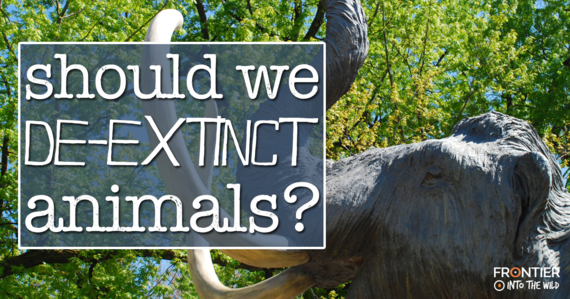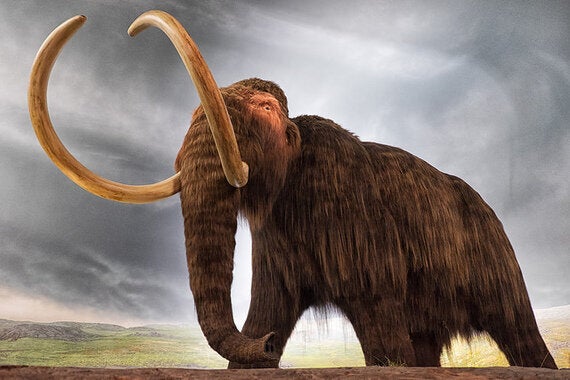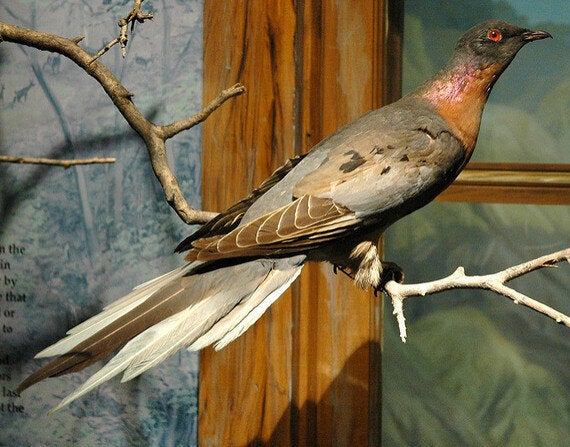
Imagine a world with woolly mammoths roaming in the wild, a world where history's creatures come to life. It's a surreal picture but it could all come true within our lifetime. Many are trying to bring back earths lost animals but how ethical is this really?
It's long been a fantasy; ever since Jurassic Park, scientists have dreamed of bringing a species back to life. Also known as resurrection biology (because that doesn't sound creepy), de-extinction is taking the cells and DNA of one organism and then cloning it to recreate a species. Cloning may be the most well-known approach but back breeding and genetic engineering are other methods.
Take the woolly mammoth for example. After retreating to Siberia during the end of the Ice Age around 10,000 years ago, the species died out. Scientists are now currently looking into creating hybrids of elephants and 'mammoths' by manipulating elephant cells. The Mammoths Revivalists Team at Wyss Institute for Biologically Inspired Engineering, Harvard has already begun carrying out the stages. They have been using CRISPR genome engineering to copy and paste the mammoths DNA into living elephant cell cultures known as fibroblasts.

The woolly mammoths blood oxygen must be released at lower temperatures and they also have subcutaneous fat for fasting. Due to this, the team have already engineered the elephant's fibroblasts to have these genetic and experimental mutations, along with the well-remembered hairy genes. Manipulating the blood, fat and hair cells of an elephant will help revive, or at least bring about, an extremely similar species.
So, what are the benefits of this?
Firstly, it would bring justice for the animals and plants that humans have drawn into extinction. It's more of a feeling than a fact but it seems obvious for some. If we're the reason they no longer live among us, don't we owe it to them to bring them back? This moral narrative seems a tad insulting to the animals and earth we have hurt. It suggests that we would be righting our wrongs, when really; nothing can excuse or make up for what we have done to our environment.
Ah, but can we now start to help the environment? Can we begin to put in more of an effort? There is the thought that certain species which have become extinct would be able to better and help the environment if they were re-introduced. The animals would be able to restore threatened or damaged ecosystems. Every animal within an ecosystem has a function. When animals from the past disappeared, many habitats changed for the worst.
The now-extinct passenger pigeon played a great role in shaping the environment. Once known as the eco-system engineer of Eastern North American rainforests, these birds became extinct in 1914. They created canopy thinning due to the size and density of their flocks, breaking leaves and branches allowing for the sunlight to hit forest floors. This let other species on the ground find warmth and vegetation flourish. This wasn't their only effect on the forests. They created fires wherever they went; forest fires. Their droppings were so flammable that they increased the occurrence of forest fires allowing for the regeneration and succession of the habitats. Many believe that de-extinction of animals could help to create rich biodiversity in threatened or endangered habitats.

Not only would it better the environment, it would also better our understanding of these creatures. As our scientific knowledge increases from the experimentation and creation of extinct species, we will be given a better insight on evolution. We will understand in more depth the reasons for their progression and also for their ending. We will begin to learn more about the natural resources we cannot use, taking that knowledge and then applying it to the conservation of currently endangered animals.
...but what are the cons?
Just like most things within the realm of science, there are risks. Although some assume that bringing keystone species back may help the environment, we can't be so sure. These animals would now be alien to their habitats. As the habitat is no longer what it was, the species role within the ecosystem may have also changed. This could actually pose a threat to the other species within the environment as they intrude into the area and become competition to food sources. Once again we're trying to force nature to act in a certain way, rather than letting it remain natural. Humans seem to be unable to have an impact on the environment whatever the context may be.
Many scientists also believe that priorities would change within the conservation of currently endangered species. Would we still put in the effort to preserve living animals if we knew we could just magically bring them back from the dead? Douglas McCauley, an ecologist at University of California, Santa Barbara, stresses this worry;
"Honestly, the thing that scares me most is that the public absorbs the misimpression that extinction is no longer scary. That the mindset becomes: Deforest, no biggie, we can reforest. If we drive something extinct, no biggie, we can de-extinct it."
It seems as though the money we spend on the de-extinction of animals would be more beneficial going towards the preservation of currently endangered species. Does it not make more sense to focus on the living rather than the dead?

By Frederick William Frohawk (16 July 1861 - 10 December 1946), an English zoological artist and lepidopterist. [Public domain], via Wikimedia Commons
Of course, another fear on people's minds is whether it is ethically acceptable to put the animals through this treatment. It may seem a good idea for research and technological advancements but how good an idea is it for the animal's own wellbeing. It does not seem in the animal's interests to be brought back from extinction purely to be used for human purposes. Animals must also be exploited throughout the process of back breeding and genetic engineering. Is this justifiable?
It seems that with the subject of de-extinction, we must look at our reasons for doing such a thing. Are the risks really worth it and who are we truly benefiting in the end?
By Simone Kelly - Online Journalism Intern
Frontier runs conservation, development, teaching and adventure travel projects in over 50 countries worldwide - so join us and explore the world!
